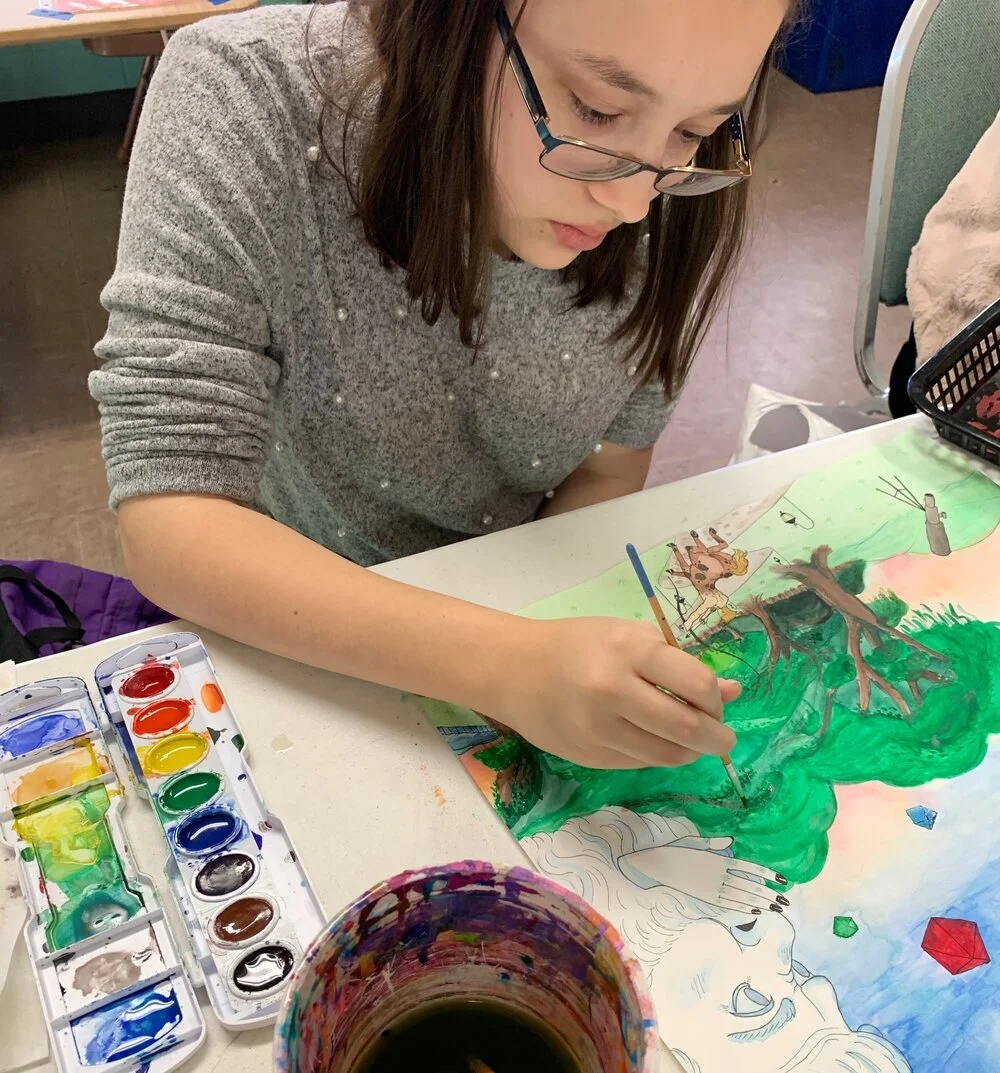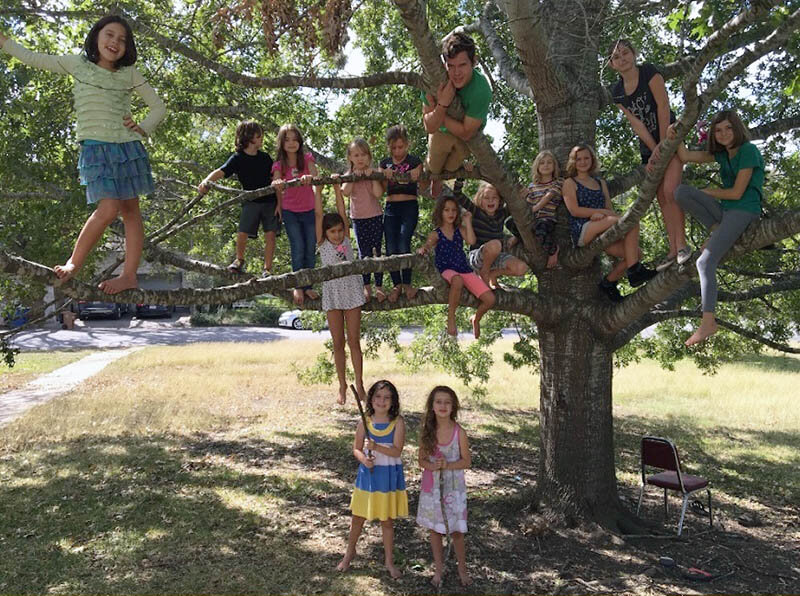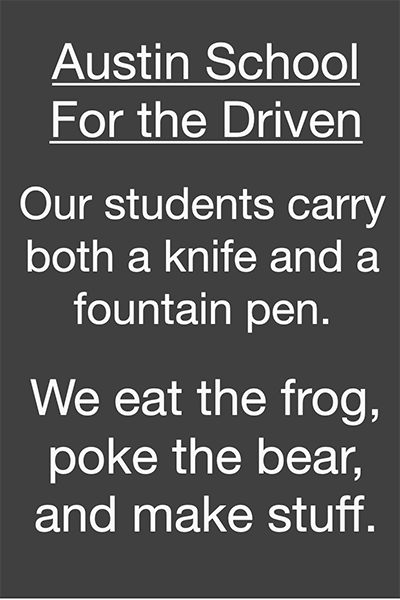Intentional tech use: Helping young people build immunity to persuasive technology
/Photo by Fredrick Tendong on Unsplash
Alt Ed Austin is delighted to bring the work and voice of guest contributor Seth Bunev to our readers. Seth is a remarkable young writer, researcher, and educator whose new book, Screenfarers: Nurturing Deliberate Action in a Digital World, was released in paperback this month; both book and ebook can be found here. He has been rethinking education systems since age 7 and has participated in numerous forms of school, from Montessori to distance learning. Starting at age 17, he spent four years offline to better understand how digital technologies had shaped his experience and to try to experience something different. Seth teaches naturalist skills to children and is currently working with Turning Life On to develop a school program that facilitates a more balanced relationship with tech at a community level.
I grew up with the internet. In high school, I regularly stayed up till three in the morning watching YouTube videos. This was normal among my peers—it was also normal to have trouble remembering things, avoid eye contact, and be diagnosed with depression. It was obvious to me at the time that these things were, at least to some degree, related to our digital habits.
Why would we do this to ourselves? Well, in the moment, it seemed fun. Somehow, it seemed fun even when my eyes were bloodshot, I had a headache, and I had barely left my room for a week. There was always another interesting thing to read, or watch, just a click away.
While modern digital technologies are powerful, and can have many benefits, some of the less positive effects are increasingly obvious: the eye damage, attention disorders, compulsive behaviors, loss of social skills, even loss of a social fabric in which to practice those skills.
It is no accident that young people spend huge numbers of hours on digital media, with US teens averaging about 7.5 hours per day in 2019. Social media and video game companies carefully design their products to be as addictive as possible, because their business model usually depends on maximizing “time on device” to generate data and ad revenue, or encourage in-game purchases. On top of that, there is the cumulative effect of millions of people competing to create the most eye-catching and engaging online content.
As a result, compulsive tech use is rampant. If this were confined only to video games, or clickbait sites, the solution would be simpler—complete avoidance would be an option. But pretty much everything on the internet can create unwanted habits, from email to database searching to blogs. It is possible to live without digital media—I did so for four years, to better understand its effects on me—but at present that is not feasible or desirable for most people. Can we have the good things the internet provides, without the disruptive habits?
It would help to have cultural norms that restrict digital tech’s invasion of every aspect of life. Perhaps we can also hope for a digital paradigm that doesn’t aggressively leverage human psychology to keep people hooked. But those things will take time. While we work towards them, we need to help kids and youth develop the skills to take charge of their relationship with digital tech at an individual level—ways to build immunity to the nebulous thing variously referred to as habit-forming technology, persuasive technology, or behavior design.
The immunity-building regimen I have developed, through research and experimentation on myself and peers, involves three components:
Understanding how persuasive tech works, the underlying motivations behind it, and how to recognize it in digital interfaces
Practicing attention to one’s own digital habits and how they are shaped by design
Cultivating habits that facilitate intentional use of digital media
Together, these three approaches can interrupt some of the unconscious habits and habit-forming mechanisms through which tech use gets out of control.
Photo by Chris Yang on Unsplash
How Persuasive Technology Works
The human brain works and develops by linking things together—neurons, words and their meanings, places and memories of them, stimuli and behaviors. These associations can form sequences, which become habits.
Drawing on the field of behaviorism founded by B. F. Skinner, digital platforms create associations that shape behavior. Specifically, they do this by linking something we desire or feel strongly about with an action the company wants us to take, according to Nir Eyal, author of Hooked: How to Build Habit-Forming Products. The desire for social connection can be linked to a behavior like checking notifications, which leads back to a social media site. Then, when someone takes the desired action, the habit is reinforced by a psychological reward—either one directly generated by the platform, such as an “achievement,” or one generated by other people using the options strategically provided within the platform, such as an exciting video or a “like.” Thanks to competition among companies, pretty much every human desire is now targeted by this approach.
The companies responsible for vast swaths of the internet use this type of psychological technique to maximize “time on device.” The net result is widespread compulsive use and many people of all ages spending more time on screens than is healthy or even desired (by them!). This is a difficult issue to confront for several reasons:
The good things about digital technologies—availability of information, ease of connection with others, entertainment, convenience—are also what can make them addictive.
Persuasive design accomplishes its goals by restructuring a person’s values, motivations, behaviors, and identity around using the platforms in question.
Persuasive design is integrated into the very infrastructure that we currently depend on for many essential and valuable activities.
Widespread dependence on digital technologies for nearly everything has destroyed the offline social fabric.
How can we navigate this complex situation? How can young people, whose identities and lives are often heavily invested in digital media, and who are immersed in a society where compulsive use of these technologies is the norm, be encouraged to find moderation, assess their habits, and be intentional?
Learning to Pay Attention
When I was a teenager slouched over my laptop, it was not helpful for my parents to tell me I was damaging my eyes, or to express any other kind of concern about the effects of my actions. I grew up in a culture that valorizes rebellion against authority—adults telling me to do something made me want to do the opposite, even if I agreed with them.
While it is helpful to tell young people about how and why digital tech is designed to shape their behavior—this is a fact of the world, which they can research themselves—it is not necessarily so helpful to tell them how they are affected by it. It can feel like an attempt to limit their freedom, creating pushback.
On the other hand, helping kids and youth see how designers of digital platforms are trying to control their behavior allows pushback to go in a more productive direction! Are the persuasive technologists succeeding? If so, in what ways? Better to ask the kids to figure that out for themselves, developing the habit of being more intentional with how they relate to devices in the process.
Photo by Peter Jones on Unsplash
One excellent way to do this is to encourage them to keep a journal of their tech use. Whether it is the number of times they touch their cellphone, the number of hours they spend on screens in a week, or how much of that time they are spending on each type of activity, writing down observations as objectively as possible can be revealing. It’s easy not to remember where the time went, but it’s hard to argue with one’s own record of it.
In addition to tracking their own behavior, young people can use journals to track the persuasive design features they find in their apps, games, and websites, and to asking questions about them. Why is this button here? Why did this message pop up at this specific time? What is this webpage trying to encourage me to do?
The more I observe consciously how I am impacted by digital tech, the more motivated I am to take charge of my interactions and ensure that they serve my goals, not Google’s or Facebook’s. And the more I look for persuasive design in the digital places I go, the less likely I am to simply do whatever a website prompts me to do without even noticing. The practice of observing and recording one’s tech habits is a way to wedge some conscious thought into sequences of behaviors that have become totally automatic.
Creating Habits of Intentional Use
Ideally, we should be helping young people create intentional use habits when such habits are the easiest to form—as soon as they have access to digital technology. But starting early is not always an option.
A “digital detox,” a period of time without digital tech, can be helpful for creating intentional habits. When I started using computers again after years offline, it was easy to stay on task and do exactly what I intended—my old habits had mostly faded into oblivion. Even a week can be enough time to create a sense of divide between habits-before and habits-after, and to give new habits a head start. Even a weekend would help.
One of the simplest ways to develop more intentional digital habits is to take a moment to decide on an intention before using a device, and practice sticking to it. The following exercise builds this skill:
Decide on a single purpose before opening a laptop, unlocking a smartphone, etc.
If straying from the original purpose, try to remember the origin of the distraction and return to the intended activity.
When finished, reflect on the difference between intention and behavior. Was there a gap? Why? What could be changed?
As with paying attention, practicing intention can be aided by recording the intention and reflection in a notebook. Over time, young people who apply this exercise to their digital activities will build up an understanding of their own minds, making it easier to anticipate and prevent distractions before they happen. The habit of sticking to an intention can help counteract the numerous sources of distraction.
Cultivating such a habit, combined with the practice of attention, a basic knowledge of how persuasive design works, and a grasp of what is at stake (their time—that is, their lives), can empower people to access the bounty of the digital age while reducing some of its negative side effects.
Note: This guest post is the author's adaptation of an article originally published on INTENTA DIGITAL.
Seth Bunev | Screenfarers





















